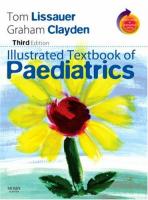
- Author / Uploaded
- G. Paul Willhite
Waterflooding (Spe Textbook Series)
Contents 5.3 1 2 Background I. I Introduction 1.2 Development of Watertlooding 1.3 Primary Production 5.5 Microscopi
2,591 323 29MB
Pages 338 Page size 612 x 792 pts (letter) Year 2010
Recommend Papers
File loading please wait...
Citation preview
Contents 5.3 1
2
Background I. I Introduction 1.2 Development of Watertlooding 1.3 Primary Production
5.5
Microscopic Efficiency of Immiscible Displacement 2.1 Introduction 2.2 Fundamental Principles Governing Fluid and Rock Interactions 2.3 Methods of Inferring Fluid Distributions in Porous Media 2.4 Principles of Multiphase Flow in Porous Media 2.5 Residual Oil Saturation 2.6 Mobilization of Residual Oil
3
Macroscopic Displacement Efficiency of Linear Waterflood 3. I Introduction 3.2 Development of Equations Describing Multiphase Flow in Porous Media 3.3 Solutions to Fluid Flow Equations in Linear Systems
4
Immiscible Displacement in Two Dimensions-Areal 4.1 Introduction 4.2 Fluid Flow Equations in 2D-Areal Displacement 4.3 Displacement in a Five-Spot Pattern 4.4 Correlations Developed From Scaled Laboratory Models-The CGM Model 4.5 Streamtube Models 4.6 Comparison of CGM and Streamtube Models for a Five-Spot Pattern 4.7 Prediction of Areal Displacement by 2D Numerical Simulators 4.8 Limitations of 2D Areal Simulators
5
5.4
5.6
5.7 5.8
5.9
Gravity Segregation and Crosstlows in Linear Reservoirs Approximation of 2D Flow With Thickness-Averaged Properties Estimation of Vertical Displacement Efficiency With Scaled Laboratory Models Numerical Simulation of 2D Displacement in Linear Systems Including Gravity Segregation and/or Crosstlow Viscous Fingering Estimating Watertlood Performance With 3D Models and Reservoir Simulators Summary
6
Waterflood Design 6.1 Introduction 6.2 Factors Constituting a Design 6.3 Reservoir Description 6.4 Selection of Potential Flooding Patterns 6.5 Injection Rates 6.6 Estimation of Watertlood Performance
7
The Role of Reservoir Geology in the Design and Operation of Waterfloods 7.1 Introduction 7.2 Field Cases Illustrating the Importance of Reservoir Description 7.3 Reservoir Description 7.4 Depositional Environment for Sandstone Reservoirs 7.5 Depositional Environment for Carbonate Reservoirs 7.6 Development of a Reservoir Description
Appendix A: Computer Programs
Vertical Displacement in Linear and Areal Models 5.1 Introduction 5.2 Two-Dimensional (2D) Displacement in Uniform Stratified Reservoirs-Layered Models
Appendix B: Streamtube Parameters for Pattern Floods, Higgins-Leighton Streamtube Model Author Index Subject Index
VI
Introduction Waterflooding was practiced as an art for years before a scientific basis for waterflood design developed. This understanding evolved primarily in the late 1940's and 1950's from extensive research and development efforts by companies and universities combined with field experience in the 1960's and 1970's. This book presents waterflooding design by building a fundamental understanding of multiphase flow in porous media. In developing this text, I sought to present concepts that reveal basic features for two- and three-dimensional (2D and 3D) displacement processes without resorting to numerical simulations. Chap. I describes the historical development of waterflooding and reviews primary producing mechanisms. Concepts of two-phase flow and microscopic displacement efficiency are reviewed in Chap. 2. Waterflooding is introduced in Chap. 3 through the study of linear displacement processes. Displacement in two dimensions is covered in Chap. 4 through analysis of waterflood performance in pattern floods. The streamtube model is introduced as a tool to design waterfloods by extending concepts developed for linear systems to areal floods. Heterogeneous reservoirs are treated in Chap. 5, first as noncommunicating layered systems. Crossflow between layers is approximated by developing the concept of pseudorelative permeability. Although numerical simulators are beyond the scope of this text, examples of numerical simulation applied to one-dimensional (1D), 2D, and 3D displacement problems are included to illustrate capabilities of numerical simulators. Chap. 6 presents one approach to waterflood design. 1 emphasize the development of a model to simulate injection rates and displacement performance as an integral part of waterflood design. Models ranging from empirical methods to numerical simulators are introduced in order of increasing complexity. Field experience combined with geological interpretation is discussed in Chap. 7 to illustrate the role of geological interpretation in the design and operation of waterfloods. Many of the waterflood design procedures can be prepared as small computer programs. Selected computer subprograms are included to help the student write more complex design programs with a reasonable effort.
VII









